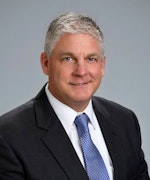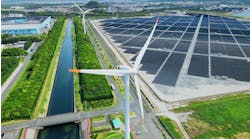As the world becomes increasingly aware of the need for sustainable energy sources, it demands that more companies shift toward renewable energy. As renewable energy becomes more prevalent, building owners and property managers need to integrate smart energy solutions into existing building systems. One such solution is distributed energy.
An alternative to traditional centralized power generation, distributed energy options deploy small-scale power generation systems created near the point of consumption, such as solar panels, micro combined heat and power (CHP), fuel cells, small wind turbines and micro gas turbines. The challenge lies in seamlessly integrating renewable energy solutions with existing traditional power technologies for buildings.
This is where scenario-based energy modeling comes into play. Energy modeling technology rapidly iterates financial and operational optimization scenarios using historical data and assumptions about key future variables. Companies can assess exactly what size and type of energy systems and applications will help save energy costs, decrease their carbon footprint, and identify a path to achieve their defined energy goals.
You wouldn’t set out on a road trip without a map, so why take on updating energy solutions without a clear path? Energy modeling can create that path.
1. Start with an assessment
The first step toward the path is to establish clear energy goals. Does a building manager want to save on energy costs, increase energy resilience, achieve net-zero energy usage, a mix of these outcomes, or all the above?
A building manager must then understand how much energy is currently used and how. This involves understanding energy consumption across various building systems, such as HVAC, lighting and appliances, and an audit using real-time data on energy usage. An energy assessment identifies potential areas of improved energy usage or areas where clean energy solutions can be implemented. The goal is to understand how a facility uses energy and then, through energy modeling tools, determine how to cut costs, reduce carbon emissions, and provide a higher level of energy resiliency by implementing distributed energy solutions that support a building’s existing energy setup.
2. Look for scenario-based energy modeling
While gathering data on current energy usage, a building manager can look at areas to improve power needs and optimize systems. Scenario-based energy modeling requires entering energy data for the previous 12 to 24 months into energy modeling software, which should simulate a range of environmental conditions, including building location, orientation, materials, and occupancy patterns, to predict future energy usage and generation needs.
Choose a modeling program that shows how much energy is being used, peak energy usage times, and what parts of a building are pulling the most energy. If the modeling software is using actual data, it should quickly and accurately predict energy consumption and renewable energy generation performance.
Energy modeling software should also iterate potential renewable energy solutions, including grid‑tied and backup energy scenarios. It then models the electrical load to assess the feasibility of using distributed energy resources, such as microgrids, solar, battery storage, and EV charging. This shows a building manager in real-time how distributed energy can help with energy costs, resiliency, or sustainability efforts, and decision-making on which clean energy solutions to implement to support their energy goals, including energy demand reduction, offsetting traditional power with clean energy solutions, or even going off-grid completely.
3. Implement ways to conserve energy
Armed with a detailed energy assessment, the building owner is now able to act. First, they should identify ways to reduce their energy consumption. Switching to LED lighting, upgrading lighting fixtures, and installing building automation systems to monitor and control energy are common tactics that can be implemented relatively quickly. Small energy conservation tactics can have a large impact on your overall energy usage. This is important if you’re planning to add distributed energy resources (DERs) in the future, as it decreases energy needs, which increases your ROI.
4. Optimize energy solutions
Using the results from the energy modeling software, property managers can work with DERs providers to identify solutions that will deliver the highest value for their company. These energy experts can review the data from the energy assessment and guide owners on incorporating the best distributed energy solutions for their needs. Solutions may include energy demand reduction and offsetting traditional, grid-tied energy usage with clean alternatives like solar or wind.
5. Continually make improvements
The benefits of smart building technology continue long after a distributed energy solution is installed. A virtual model of an energy system can continuously optimize the installed distributed energy system. As more data on energy usage is gathered, building owners can adjust their distributed energy solutions to get the best value out of their systems. For example, they might add energy storage to bank generated solar power, subsequently increasing their energy resilience and reducing their utility costs.
Ongoing energy modeling enables building managers to assess energy alternatives and their impact before they invest in additional systems.
6. Generate energy to achieve independence
Producing renewable energy on-site can accelerate clean energy goals while reducing costs. Energy modeling can provide information on how much energy can be produced from solar, wind, or other energy generation resources depending on a site’s geographical location, surrounding weather patterns, and placement of each asset. Microgrids utilize power from multiple distributed energy sources, such as solar and wind, and then store excess power in a battery storage system for when the main source of power is not available, such as during the night for solar energy. This can enable building owners to reach full grid independence. Costs for implementing a microgrid can vary drastically, so a building owner should consult with a distributed energy solutions provider beforehand.
Energy modeling technology plays a crucial role in revolutionizing the building industry and creating a path to smarter energy. It empowers building managers to minimize energy usage and costs, optimize energy performance, and improve building operations. Ultimately it helps clarify where an owner is in their energy journey and how they can reach their goals.
Dan Nordloh is a senior vice president and general manager at EnTech Solutions, a provider of energy assessment and modeling services.
For more news, projects, and profiles in the smart buildings ecosystem, subscribe to the SBT newsletter and follow us on LinkedIn, X, and Facebook.



